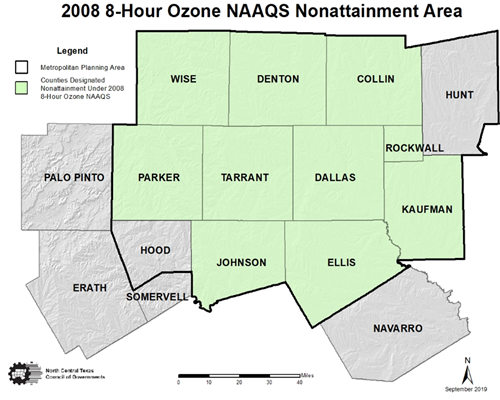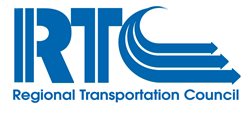Local Motion - March 2021
Campaign urges N. Texans to ‘look out’ for safety
 As spring approaches, both the trails and streets of North Texas are likely to see increased activity from bicyclists and pedestrians. More people biking and walking puts a greater focus on the importance of safety for all users of the transportation system. Look Out Texans, a regional public safety and education campaign, is once again sharing tips to encourage everyone to help make the region’s roads safer for drivers, bicyclists and pedestrians.
As spring approaches, both the trails and streets of North Texas are likely to see increased activity from bicyclists and pedestrians. More people biking and walking puts a greater focus on the importance of safety for all users of the transportation system. Look Out Texans, a regional public safety and education campaign, is once again sharing tips to encourage everyone to help make the region’s roads safer for drivers, bicyclists and pedestrians.
Throughout the spring and summer, the campaign will use a variety of outreach tools to reach audiences most at risk for being in a crash, as well as the general public. Look Out Texans features tips to help people bicycling, walking and driving understand how they should interact together to improve safety on area roads.
Look Out Texans campaign efforts enhance the work of local, State and federal transportation partners who are focused on improving reliability and safety for all road users through roadway design solutions and greater awareness of how people can bike, walk and drive safely.
The North Central Texas Council of Governments is coordinating Look Out Texans for cities and transportation partners across the region. It comes at a time when motor vehicle crashes that involve people bicycling and walking are increasing in North Texas. Between 2015 and 2019, there were more than 10,500 such crashes reported, resulting in 864 fatalities, according to the Texas Department of Transportation. Consequently, the Federal Highway Administration has designated Dallas and Fort Worth as two of its 35 Pedestrian-Bicycle Focus Cities, which are selected based on high rates of crash fatalities. For more information about Look Out Texans, including tips that can help make the roads safer for all, visit www.LookOutTexans.org.
Help North Texans breathe clean this ozone season
 Ozone season in North Texas began March 1 and will run through the end of November. This is the time of year when ozone is typically at its highest concentration. Ozone forms when nitrogen oxides (NOx) and volatile organic compounds combine with sunlight and intense heat.
Ozone season in North Texas began March 1 and will run through the end of November. This is the time of year when ozone is typically at its highest concentration. Ozone forms when nitrogen oxides (NOx) and volatile organic compounds combine with sunlight and intense heat.
The Dallas-Fort Worth area is in nonattainment for ozone pollution and continues to pursue attainment of both the 2008 standard of 75 parts per billion and the 2015 standard, which toughened the requirement to 70 ppb. The current design value is 76 ppb.
The air quality index is a tool used to report daily ozone levels and help the public better understand the severity of high ozone levels in the region and their related health impacts. The color-coded chart is an easy way to follow the air quality. When the level is green or yellow, that indicates the air quality is good or moderate and safe to go outside. When the level is orange or higher, the air quality can be unsafe.
A few simple changes to people’s daily routines, such as telecommuting or opting for public transit, could make a difference. To stay informed about the air quality index, North Texans are encouraged to sign up for air pollution alert at www.airnorthtexas.org/signup. High ozone can be combated in other ways also, including reducing idling, taking your lunch to work and conserving water and electricity. For more ways to take action, visit www.airnorthtexas.org/howto.
Wednesday, August 4, is the annual Air North Texas event, Clean Air Action Day, which encourages involvement from North Texans to make the air cleaner. Residents are asked to consider doing at least one thing on this day to improve air quality. Additionally, they can share their actions on social media by including #CAAD2021 on their posts or tagging @NCTCOGtrans.
But, they don’t have to wait until the weather is hot to contribute to the effort. Making small changes throughout the year could help the region in its effort to meet ozone attainment. With the coronavirus pandemic continuing into this year, Air North Texas offers tips on how people can think about their impact to the air while doing their part to keep themselves and those around them healthy.
Study shows how TOD influences transit choices
When people live close to transit stops, they are significantly more likely to ride the bus or train to work, school or other activities.
According to a recent survey of transit-oriented development around 28 Dallas Area Rapid Transit Red and Blue Line stations, 23% of those a quarter-mile from a station are likely to take transit. Conversely, 7% of North Texans who live a mile from transit are likely to use it as a commuting option, according to the survey.
Responses were collected from residents, businesses and employees around the stations before the coronavirus pandemic began. People living near transit were also 10 times as likely to commute by bus or train than North Texans as a whole.
Businesses in denser areas of the region also saw more customers commute by walking or biking. Active transportation connections influenced more than how residents traveled throughout the region. For example, sidewalks through neighborhoods ranked high on residents’ list of reasons for choosing where to live. According to the survey, they were third on the list, behind housing cost and low crime rates. Overall, 52% of residents reported they preferred being within walking distance of daily activities.
Although people’s proximity to transit makes them more likely to choose that option, challenges remain. For example, 81% of residents within a mile of stations commute by driving alone. NCTCOG can use the results of this survey to inform future
planning initiatives. For more information, visit www.nctcog.org/tod.
Bishop Arts project brings more bike parking
 In the Bishop Arts District of Dallas, a bicycle parking parklet has been developed with a focus on accommodating the needs of bicyclist customers of area businesses in the area. The bicycle parking facility, installed at the intersection of North Bishop Avenue and West Eighth Street, is the same dimension as two parallel vehicle parking spaces and will accommodate 13 bicycles. The goal is to facilitate multimodal transportation and to ease the overall demand for vehicle parking in the Bishop Arts District. The parklet design includes buffered wheel stops at each end, and vertical landscape planters, to make the structure visible to traffic.
In the Bishop Arts District of Dallas, a bicycle parking parklet has been developed with a focus on accommodating the needs of bicyclist customers of area businesses in the area. The bicycle parking facility, installed at the intersection of North Bishop Avenue and West Eighth Street, is the same dimension as two parallel vehicle parking spaces and will accommodate 13 bicycles. The goal is to facilitate multimodal transportation and to ease the overall demand for vehicle parking in the Bishop Arts District. The parklet design includes buffered wheel stops at each end, and vertical landscape planters, to make the structure visible to traffic.
The bicycle parking area also includes a seating area and a shade structure. If it works in the Bishop Arts District, the concept is expected to be replicated across the region.
Virtual UAS workshop scheduled March 6
The next virtual drone workshop is scheduled for 10 a.m. to noon Saturday, March 6.
This FREE monthly session will focus on public safety and its use of UAS technology. In public safety, drones can be used to assist with accident investigations, law enforcement and search-and-rescue operations.
Drones, also called unmanned aircraft systems, have become more common in North Texas and across the nation, as advances in technology have opened new opportunities for businesses, governments and residents who want to enjoy flying them as a hobby.
Recognizing this, the Regional Transportation Council has approved a resolution encouraging agencies to support the use of drones to enhance public safety operations and work with the industry to find opportunities to demonstrate safe drone use in the region.
Educational institutions are encouraged to offer instruction that will help prepare the workforce for the future.
For information and to register for the next workshop, visit www.northtexasuas.com. Links to previous virtual workshops are also available on this site.
NCTCOG online input opportunity starts March 8
 Residents can review and comment on several NCTCOG projects and programs during the March online input opportunity, which begins Monday, March 8 and runs through April 7.
Residents can review and comment on several NCTCOG projects and programs during the March online input opportunity, which begins Monday, March 8 and runs through April 7.
One of the primary responsibilities of a Metropolitan Planning Organization is the development and maintenance of a Metropolitan Transportation Plan, a long-range blueprint that lays out transportation system improvements for at least 20 years. The current MTP for the Dallas-Fort Worth region, directs the spending of federal and State transportation funds through 2045. Staff has initiated an update to Mobility 2045 and will provide an overview and timeline for the Plan.
Additionally, NCTCOG staff will provide an overview of the Look Out Texans campaign, which informs people walking, biking and driving on how to be safe and watch for one another on Texas roadways and trails.
The campaign launches this spring and will run through the fall, focusing on crosswalk safety, biking tips and how drivers should interact with people biking and walking.
Finally, staff will present results from the Dallas-Fort Worth Clean Cities 2019 Annual Survey. NCTCOG is the host organization for DFWCC, a US Department of Energy initiative to reduce total energy impacts in the transportation sector.
DFW Clean Cities has a goal of increasing petroleum reduction by 15% each year and seeks information from local fleets about alternative fuel use and other fuel-saving activities.
The Map Your Experience tool, Regional Smoking Vehicle Program, vehicle incentive opportunities, and NCTCOG’s regional trails video series will also be highlighted.
For more information and an audio recording of the presentations, visit www.nctcog.org/input. Comments can be made by emailing transinfo@nctcog.org.
